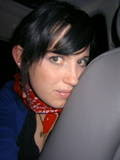Chapter One: Moving Toward a Reader-Centered Classroom.
Right away I can tell that I will be enjoying this book. Wilhelm writes in a way that comforts you; bringing in direct field experiences and sensitivity. It’s not just fact after fact after fact. I found it enjoyable that he paradoxes Plato’s definition of a slave and a student’s reaction to school. This book will be good for me because I was so much like Joanne while I was in school. I loved to read and read everywhere. I do; however, know that there are lots of students who feel opposite from me. I need to show them the excitement of reading so they can find pleasure in it.
In my Studies of the Novel class we currently discussed what makes a novel a novel. New Criticism has a lot to do with that. Breaking away from literal and becoming embraced in the arms of a good book: The role of the reader as an active meaning maker. I learned how to read using phonics and I remember actually enjoying it. I do see how it could be boring and redundant for students. That’s why I am really curious about this bottom-up approach in comparison to top-down. I think that it would be beneficial to many students.
Chapter Two: Looking at Student Reading
Under the section ‘What makes Valid Reading?’ I found the question, “How could the students and I create a learning climate that would be meaningful for all of us, one that emphasized our current readerly activities and human concerns? How could we run a class that helped to encourage vital and enriching reading experiences by building on what individuals already knew and could do, and that extended and developed them as readers from whatever starting point they now inhabited?” (p.27-28). I found these questions to stick out to me right away because I know that it’s important to develop these points.
Making sure that the students are reading for meaning and not just for concept is a fact that you don’t really thing about too much. It’s amazing how much work we teachers need to put into each student. I feel as though a lot of the problems with students who don’t enjoy reading is because the parent’s were too busy to read to them at home. Doing the proper research is very important.
Chapter 3: The dimensions of the Reader’s Response
One thing I found about going into education is how helpful books can be. They are full of great ideas and little secrets of the classroom. Wilhelm’s chapter 3 starts off with a whole bunch of different reader-response activities. I know that these will come handy when I am in the classroom and need ideas. The quick descriptions are nice too. I feel that genre for a student is something that is HUGE and needs to be constantly addressed. Understanding audience for both when they are writing and reading is detrimental to their experience. Wilhelm touches on this at the end of his chapter.
Monday, September 17, 2007
Subscribe to:
Posts (Atom)
